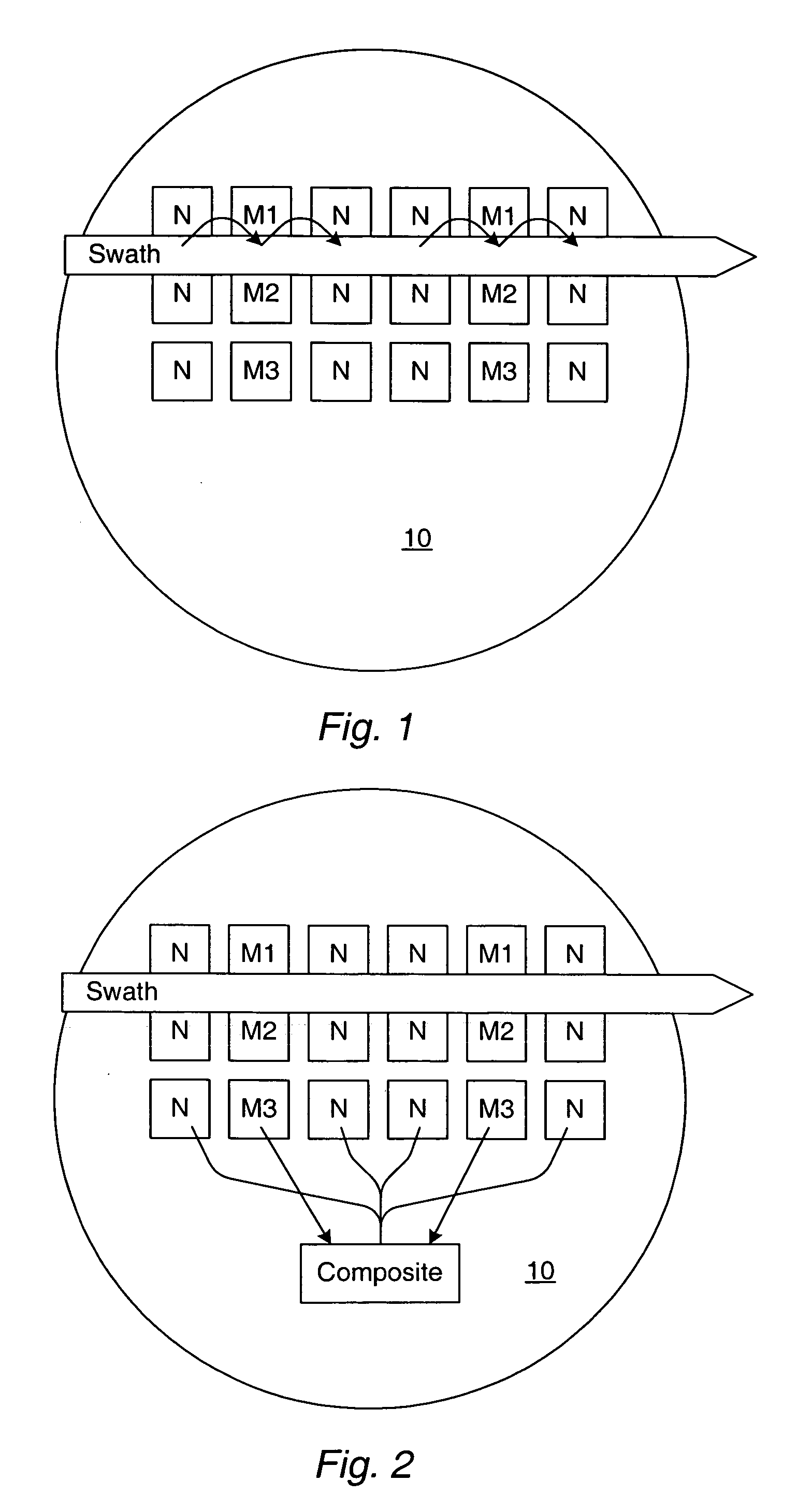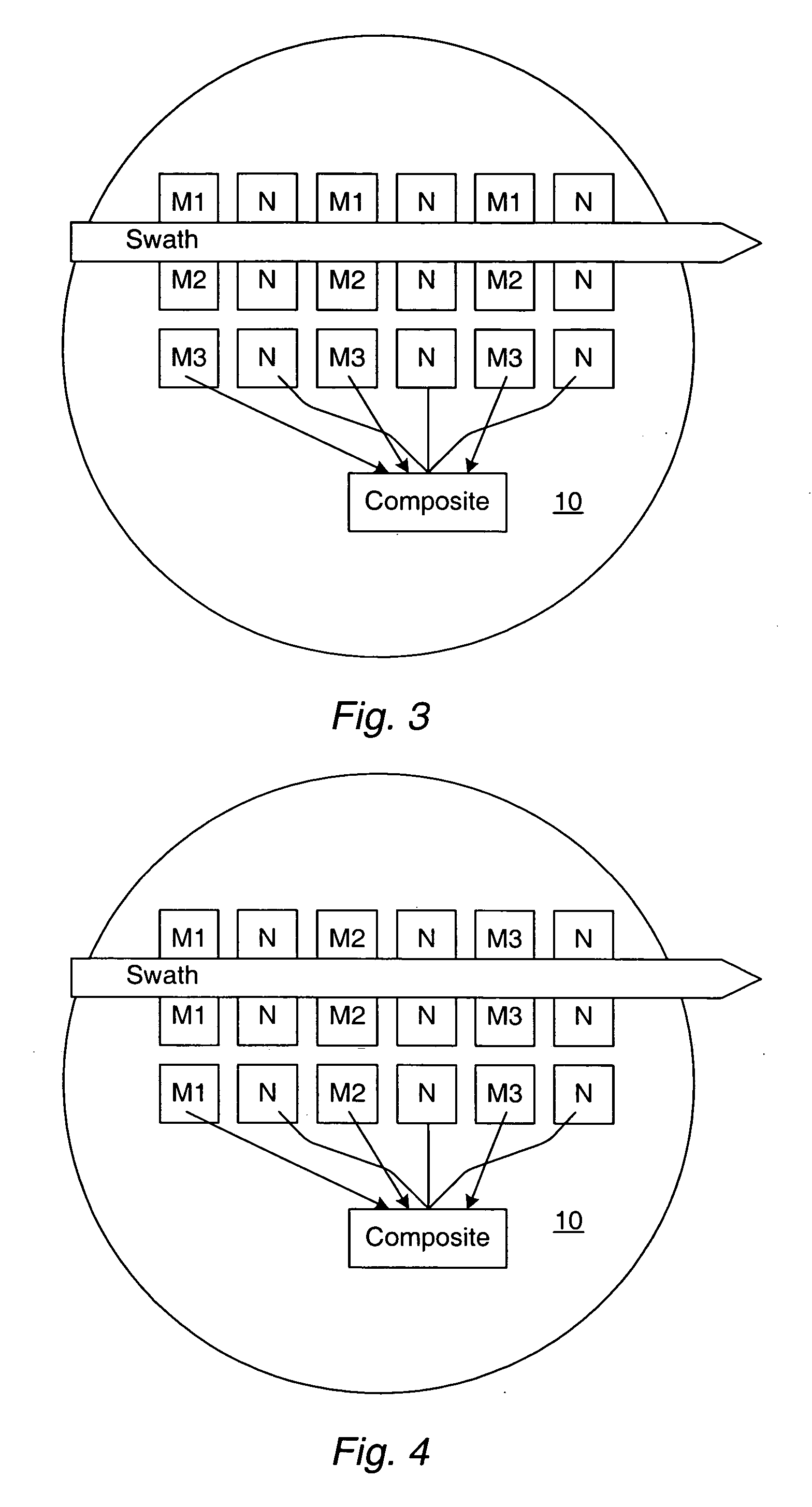Computer-implemented methods for detecting and/or sorting defects in a design pattern of a reticle
a technology of computer implementation and design pattern, which is applied in the direction of semiconductor/solid-state device testing/measurement, instruments, photomechanical equipment, etc., can solve the problems of high inefficiency, difficult and consequently more expensive manufacturing of reticles, and electrical failures in wafer fabrication
- Summary
- Abstract
- Description
- Claims
- Application Information
AI Technical Summary
Benefits of technology
Problems solved by technology
Method used
Image
Examples
Embodiment Construction
[0040] As used herein, the term “defect” refers to a defect in a design pattern of a reticle that may cause a defect in a design pattern printed on a wafer using the reticle such as excessive corner rounding, unsatisfactory dimensions, missing features, bridging between features, etc. In particular, the methods described herein are particularly suitable for detecting defects in resolution enhancing technology (RET) features of the design pattern.
[0041] The terms “reticle” and “mask” are used interchangeably herein. A reticle generally includes a transparent substrate such as glass, borosilicate glass, and fused silica having a layer of opaque material formed thereon. The opaque regions may be replaced by regions etched into the transparent substrate.
[0042] Many different types of reticles are known in the art, and the term reticle as used herein is intended to encompass all types of reticles. For example, the term reticle refers to different types of reticles including, but not li...
PUM
 Login to View More
Login to View More Abstract
Description
Claims
Application Information
 Login to View More
Login to View More - R&D
- Intellectual Property
- Life Sciences
- Materials
- Tech Scout
- Unparalleled Data Quality
- Higher Quality Content
- 60% Fewer Hallucinations
Browse by: Latest US Patents, China's latest patents, Technical Efficacy Thesaurus, Application Domain, Technology Topic, Popular Technical Reports.
© 2025 PatSnap. All rights reserved.Legal|Privacy policy|Modern Slavery Act Transparency Statement|Sitemap|About US| Contact US: help@patsnap.com



